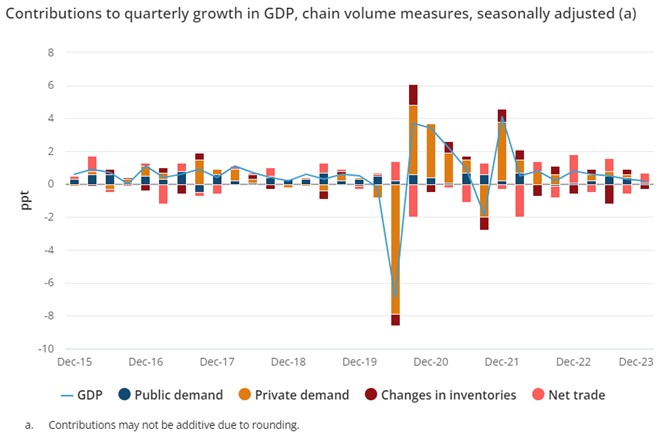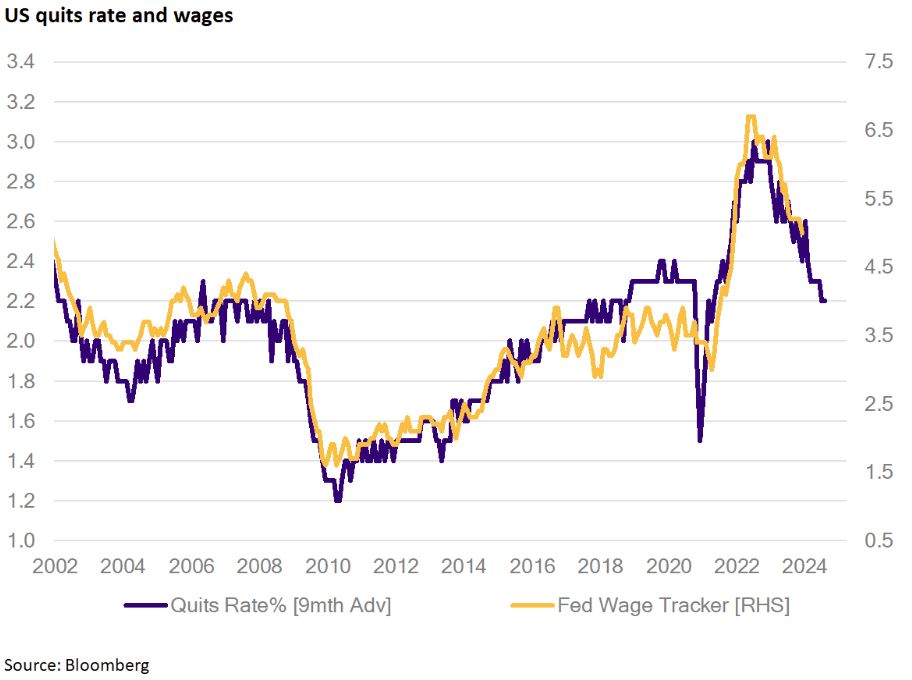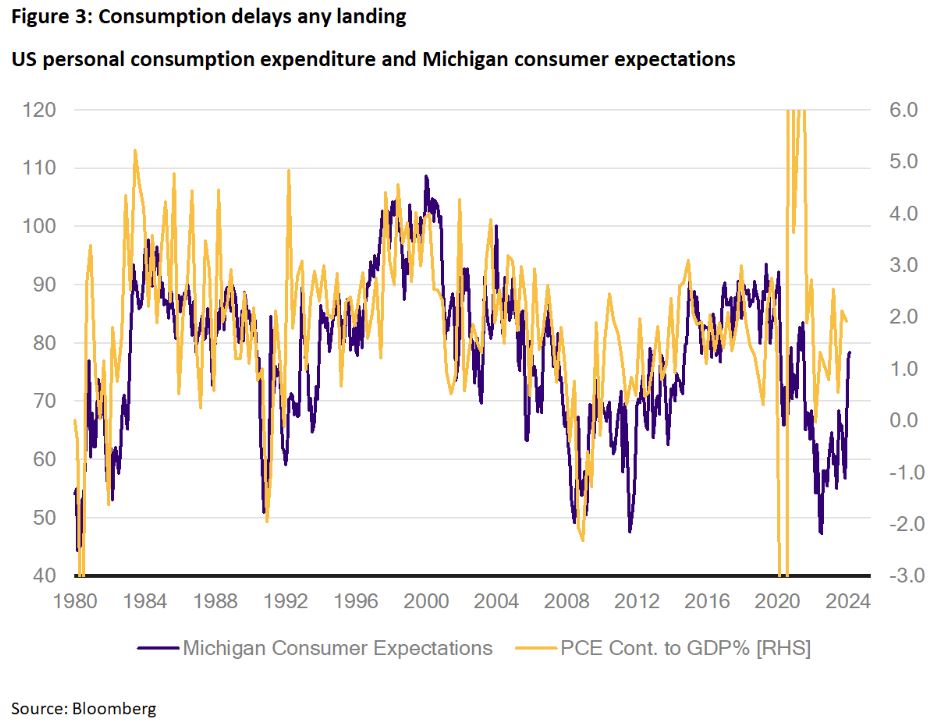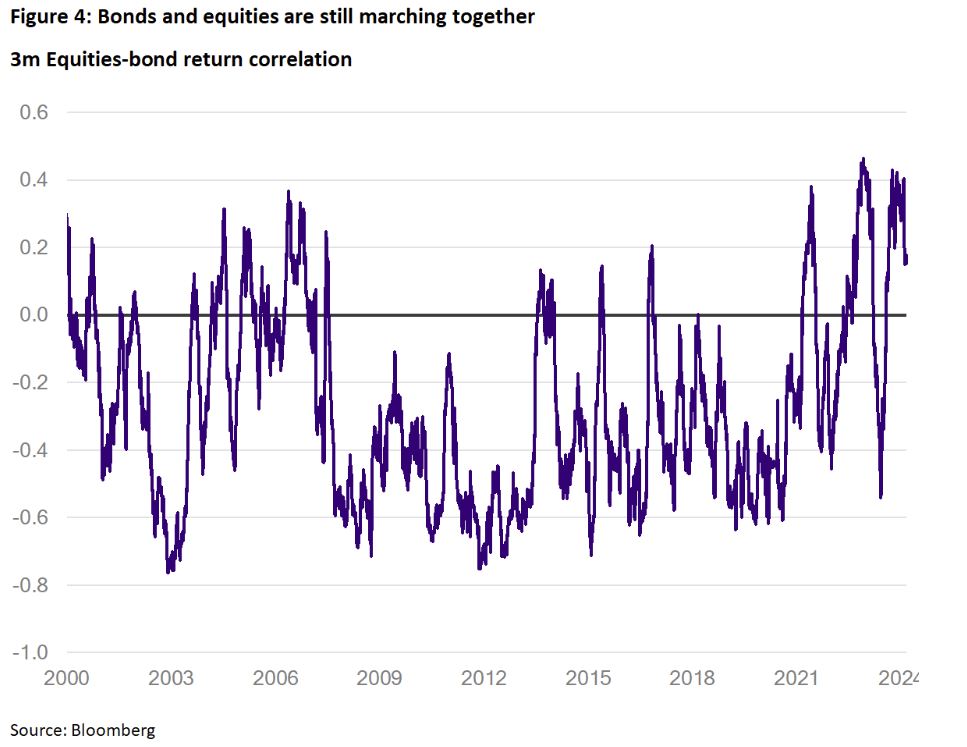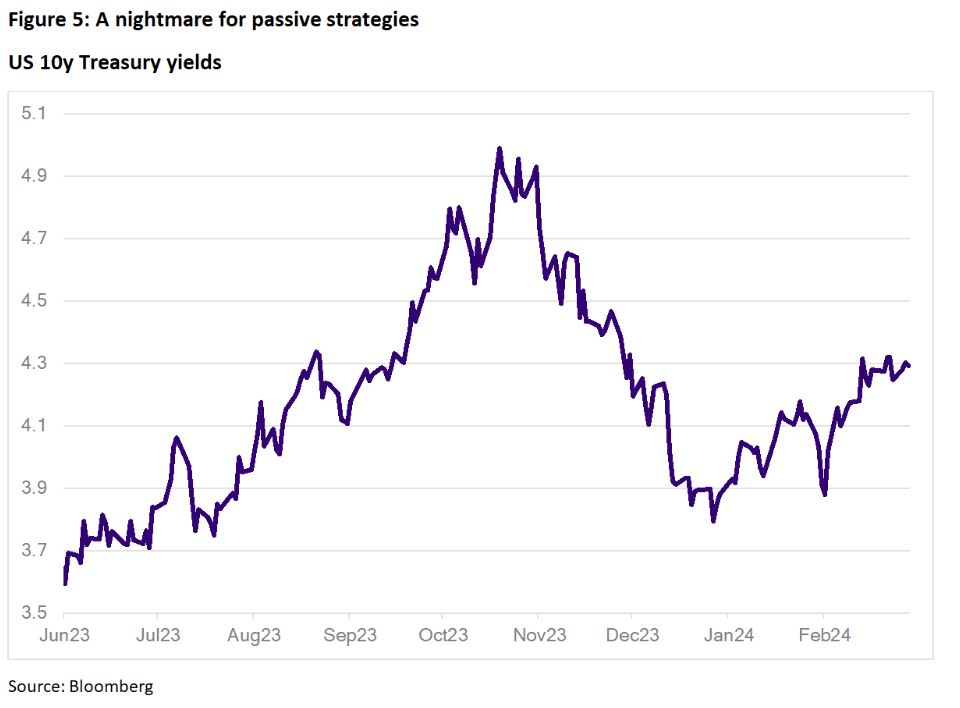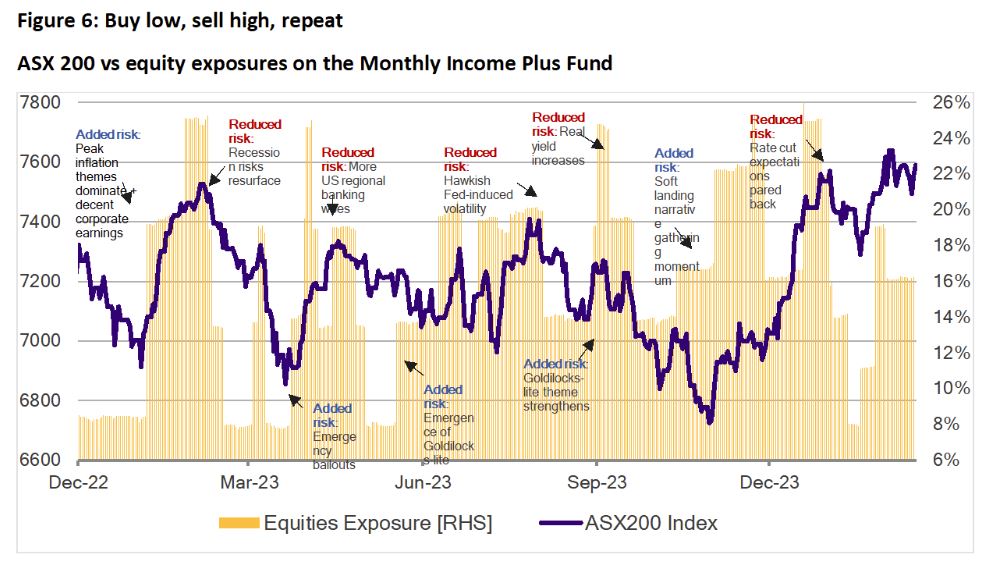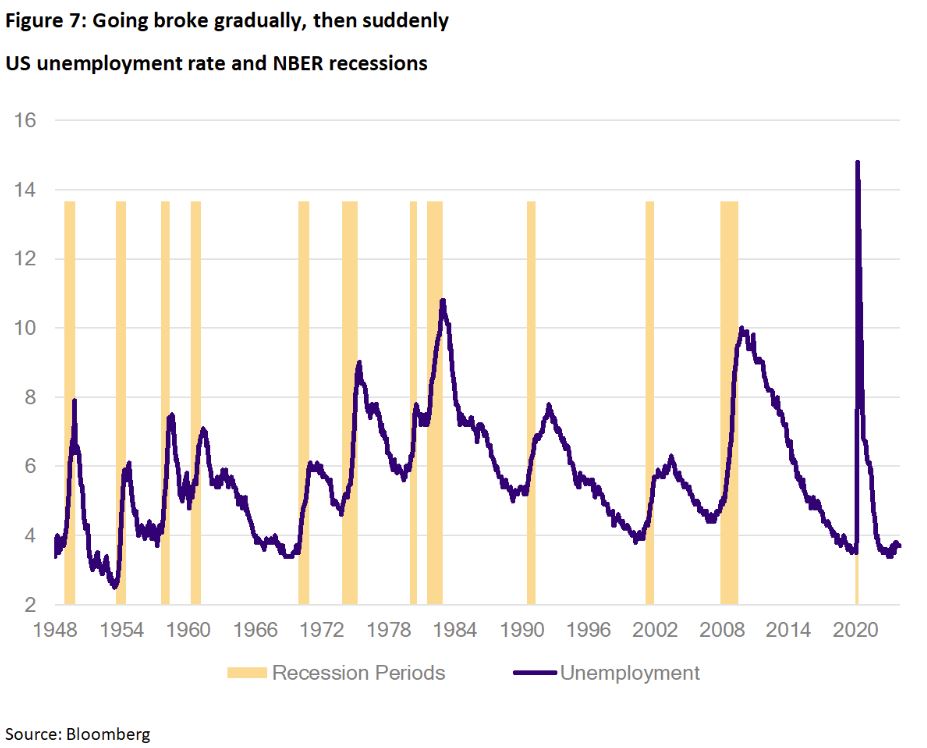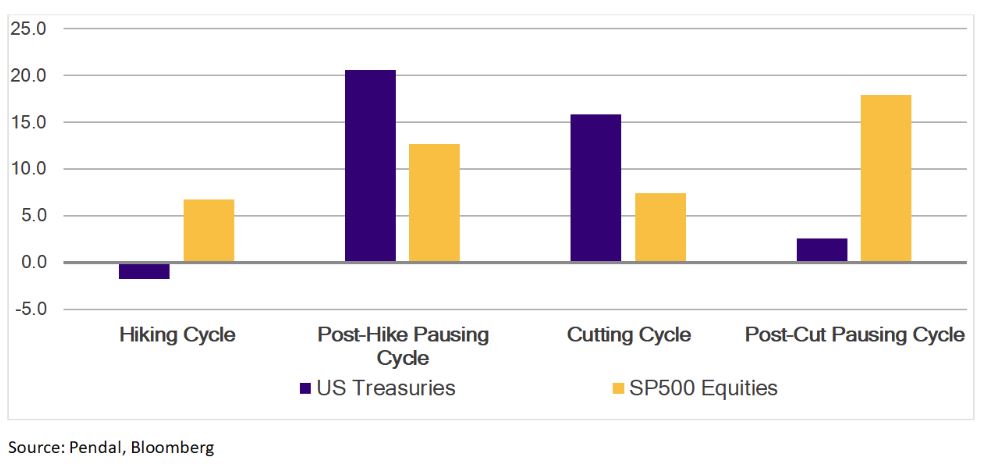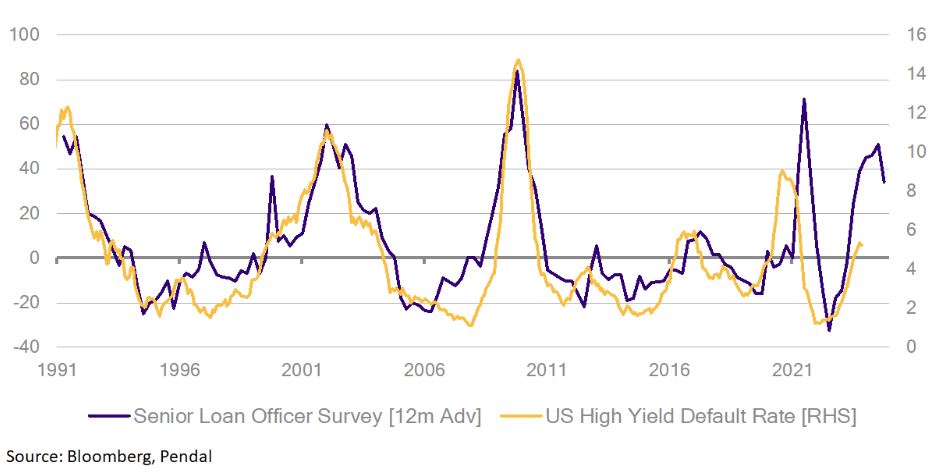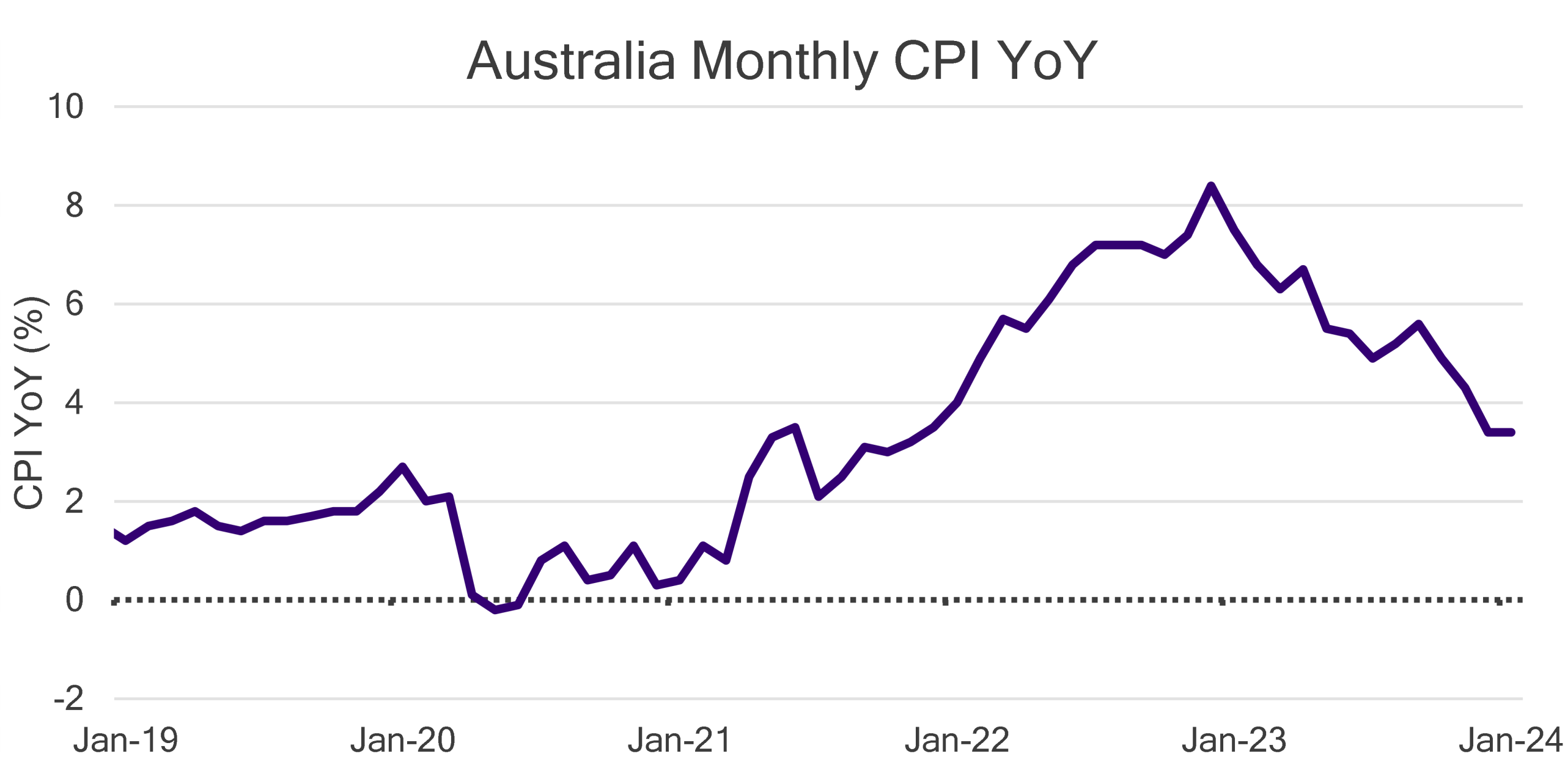While the US-based ‘Magnificent Seven’ takes the spotlight, several ASX-listed companies are leveraging of AI technology, reports Pendal analyst ELISE McKAY
- Xero is close to testing an AI-based business companion
- NEXTDC is building local AI infrastructure
- Find out about Pendal Focus Australian Share fund
ON A TOUR of the US late last year, Pendal Aussie equities analyst Elise McKay met with dozens of companies – and found generative AI was a topic in almost every meeting.
“There’s strong evidence that over the longer term generative AI will have a big impact across the business landscape,” McKay said at the time.
Aussie equities investors should keep an eye on how companies are investing in AI, as well as which infrastructure suppliers are best placed to benefit in a fast-evolving market.
Below is an update from McKay, outlining how her expectations are playing out after the recent ASX results season.
Here she focuses on ASX-listed data centres player NEXTDC and software maker Xero – both held by Pendal.
XERO (ASX: XRO)
Generative AI – a machine-learning model that is trained to create new data, content and insights – is being embraced globally as corporates leverage “large language models” and infrastructure available off the shelf.
Xero – a cloud-based finance and accounting software maker – is a good example.
At its inaugural investor day, Xero announced a generative AI tool called JAX (short for Just Ask Xero).

The tool is designed to help customers with personalised insights and tasks such as raising and sending invoices to customers.
Xero plans to test the tool with customers later this year.
Xero first started working on its generative AI strategy about eight months ago and made a key hire in Eitan Sharon as its data and science lead in November.
Within months of Eitan joining, Xero had a functional tool in place, demonstrating the speed with which these products can be built and deployed.
NEXTDC (ASX: NXT)
With rapid growth in demand for generative AI tools comes demand for infrastructure to run and support training and inference models.
Training refers to the process of building AI models, while inference refers to how those models are deployed in an application or business setting.
Focus is expected to shift from AI training to inference over time – which may advantage some players and disadvantage others.

Australian data centre operator NEXTDC (ASX: NXT) hopes to play a significant role in both markets.
NXT is expected to launch its first Nvidia-based “AI factory” in coming months.
It’s our expecation the AI factory will use graphics processing units made by Nvidia – the $US 2 trillion-dollar NASDAQ-listed chipmaker that has become the face of the artificial intelligence hardware manufacturing race.
This would be complementary to existing NXT data centre infrastructure which is ideally positioned to hosts inference model technology – which requires proximity to clients to limit latency.
NXT has recently signed contracts with hyper-scale players in Sydney and Melbourne to support their cloud deployments.
AI deployments would be over and above these contracts, and — if following the US trend — at a size significantly larger than what has recently been signed.
There are now also contracts being tendered in market for sizeable AI deployments for both training and inference needs. These are reportedly significantly larger in size again than recent contracts.
Demand for onshore AI infrastructure
NXT’s customers are expected to differentiate their needs depending on whether they are contracting for training or inference work.
But in both cases, Australian clients prefer onshore AI infrastructure technology due to data sovereignty issues and the need for low latency.
Training models can be located close to wherever access to power is available and priced cheaply, while inference models need to be in metro locations.

Find out about
Pendal Horizon Sustainable Australian Share Fund
This is well-suited to NXT’s footprint which is spread geographically across six states and territories of Australia and closely located to CBDs.
NXT is well positioned to win its fair share with available inventory in all markets and great relationships across the customer base.
Access to power
Access to power is one of the big issues that continues to face the AI industry
Data centres, crypto currencies and AI consumed 2% of global energy demand in 2022, the International Energy Agency estimates.
The IEA forecasts global demand for energy from these sources to grow at 8% to 23% from 2022 to 2026.
In the US, data centres accounted for about 4% of energy demand in 2022. They are expected to account for half of US electricity demand growth over the next three years.
Clearly the AI industry needs resolve this issue to meet demand.
The issue will be attacked from multiple angles including increased compute efficiency (eg Huang’s law), new cooling technologies (eg direct-to-chip cooling, liquid immersion) and innovative power solutions (eg small modular reactors).
About Elise McKay and Pendal Australian share funds
Elise is an investment analyst and portfolio manager with Pendal’s Australian equities team. Elise previously worked as an investment analyst for US fund manager Cartica where she covered a variety of emerging market companies.
She has also worked in investment banking and corporate finance at JP Morgan and Ernst & Young.
Pendal Horizon Sustainable Australian Share Fund is a concentrated portfolio aligned with the transition to a more sustainable, future economy.
Pendal Focus Australian Share Fund is a high-conviction equity fund with a 16-year track record of strong performance in a range of market conditions. The Fund is rated at the highest level by Lonsec, Morningstar and Zenith.
Pendal is an independent, global investment management business focused on delivering superior investment returns for our clients through active management.
The December-quarter GDP numbers just stopped short of the “no-growth” scenario we were slowly sliding towards last year. Pendal’s head of government bond strategies TIM HEXT explains what it means for markets
- Weakness largely derived from consumer spending
- On a nominal basis, the picture looks better
- Why bonds, why now? Pendal’s income and fixed interest experts explain
- Browse Pendal’s fixed interest funds
THE December-quarter GDP numbers just stopped short of the “no-growth” scenario we were slowly sliding towards last year.
Q4 GDP came in on forecast at just 0.2%, as you can see in the ABS graph below.
After 2.3% growth in 2022, 2023 finishes with GDP at 1.6%.
Source: ABS, 2024
In per capita terms, we went backwards for the third quarter in a row (-0.3% for the quarter) and are down 2.4% over 2023.
The weakness is largely from consumer spending, which is going almost nowhere – this was up 0.1% for the quarter and 0.1% for the year.
Remember, this was a year where almost 600,000 people entered the country so, on average, we are all spending less than in 2022.
Interestingly, we are earning more, but it is all being swallowed up by inflation, interest rates and tax creep.
In fact, compensation of employees was up 8.1% in 2023, but taxes paid 11.5%. The Stage 3 tax cuts (beginning July) will only partly remedy this.
READ NEXT: What are the main factors impacting income strategies right now? In a new article, Pendal’s head of income strategies AMY XIE PATRICK explains how her view has evolved in recent months. Read the article here
If you feel like money is going out just as fast as it comes in, you have good reason.
The GDP you hear reported is a volume measure (called chain volume) of output for the economy.
Most of us think in nominal terms.
On a nominal basis things look better – with GDP at 1.4% for Q4 and 4.4% for 2023.
Higher prices and improving terms of trade has helped cushion the blow in the real economy.
Government and business investment propping up the economy
So, if consumer spending – which makes up 50% of the economy – is flatlining, then where is the modest growth coming from?
Government spending and investment continues to be strong.
Government spending was up 0.6% for the quarter and 2.7% for the year, while government investment was slightly down for the quarter but up a massive 13.6% in 2023.
Private investment was up as well, but modest overall.
Data centres and warehouses are driving solid growth.
Concerningly though, dwelling investment was down 3.8% for the quarter and down 3.1% on the year.
Hopes of a building boom to help the housing shortage fly in the face of higher interest rates.
Rents go up, so inflation goes up, so interest rates go up, so housing investment falls – if you follow the logic of rate hikes to tackle rental inflation, you are smarter than me.
Hours worked still falling
The GDP numbers also include data on hours worked.

Find out about
Pendal’s Income and Fixed Interest funds
This fell for the second quarter in a row and is now down 1% from mid-year.
The RBA will take some comfort that firms are responding to slower conditions by reducing hours of existing employees and not hiring new ones, rather through layoffs – at least for now.
So, what does this mean for markets?
First of all, the rate hikes have worked.
While the fixed rate cliff has been more of a speed bump, the RBA will be pleased that higher rates are reducing demand in the economy.
Lower immigration in the year ahead will also help.
At the same time, the supply side of the economy is another year away from the pandemic and has now largely normalised.
This will give the RBA further comfort that its path back to inflation below 3% is realistic and achievable.
This, in turn, opens the door to rate cuts later in the year.
We still think three cuts – in September, November and December – are realistic.
By then, the US Federal Reserve should be well into rate cuts, and inflation – while sticky around 3% – would be considered under control.
In turn, GDP would be allowed to push back up towards 2% or above without threatening the inflation outlook – and this would be a good outcome for all and meet the objectives of the RBA.
About Tim Hext and Pendal’s Income & Fixed Interest boutique
Tim Hext is a Pendal portfolio manager and head of government bond strategies in our Income and Fixed Interest team.
Tim has extensive experience in banking, financial markets and funding including senior positions with NSW Treasury Corporation (TCorp), Westpac Treasury, Commonwealth Bank of Australia, Deutsche Bank, Bain & Co and Swiss Bank Corporation.
Pendal’s Income and Fixed Interest boutique is one of the most experienced and well-regarded fixed income teams in Australia.
Find out more about Pendal’s fixed interest strategies here
About Pendal
Pendal is a global investment management business focused on delivering superior investment returns for our clients through active management.
In 2023, Pendal became part of Perpetual Limited (ASX:PPT), bringing together two of Australia’s most respected active asset management brands to create a global leader in multi-boutique asset management with autonomous, world-class investment capabilities and a growing leadership position in ESG.
What are the main factors now affecting fixed income investors? Pendal’s head of income strategies AMY XIE PATRICK explains how her view has evolved in recent months
- There could be heightened volatility and bouts of “everything sell-offs”
- A hard landing isn’t off the table, but it’s too soon to position for it yet
- Why bonds, why now? Pendal’s income and fixed interest experts explain
- Browse Pendal’s fixed interest funds
Will US 10-year yields end the year closer to 3% or 5%?
Three months ago, I would have put a 70% probability on 3%.
Today, I’m a fence-sitter – though there are arguments for both sides of the fence.
The main thing that’s changed is…well…nothing. The consumer is still incredibly resilient. It’s not clear where that resilience is coming from, but here’s a theory.
Excess savings buffers have been wearing down since the pandemic, but one thing after another has offset the economic effect.
In 2023, an increasing budget deficit found its way into the pockets of US consumers. In Australia, an influx of immigration kept aggregate consumption at a healthy level, even if individually we were feeling more mixed.
The latest saving grace has been disinflation.
Prices move faster than wages on the way up and on the way down. Put another way, real incomes are eroded in periods of high inflation, and boosted when inflation falls.
This has a direct impact on consumer sentiment, which feeds into consumption.
In Australia there is a strong relationship between real incomes and sentiment. Real wages seem to lead sentiment by about three months.
Even as savings buffers wane, a fall in inflation has boosted real consumer spending power.
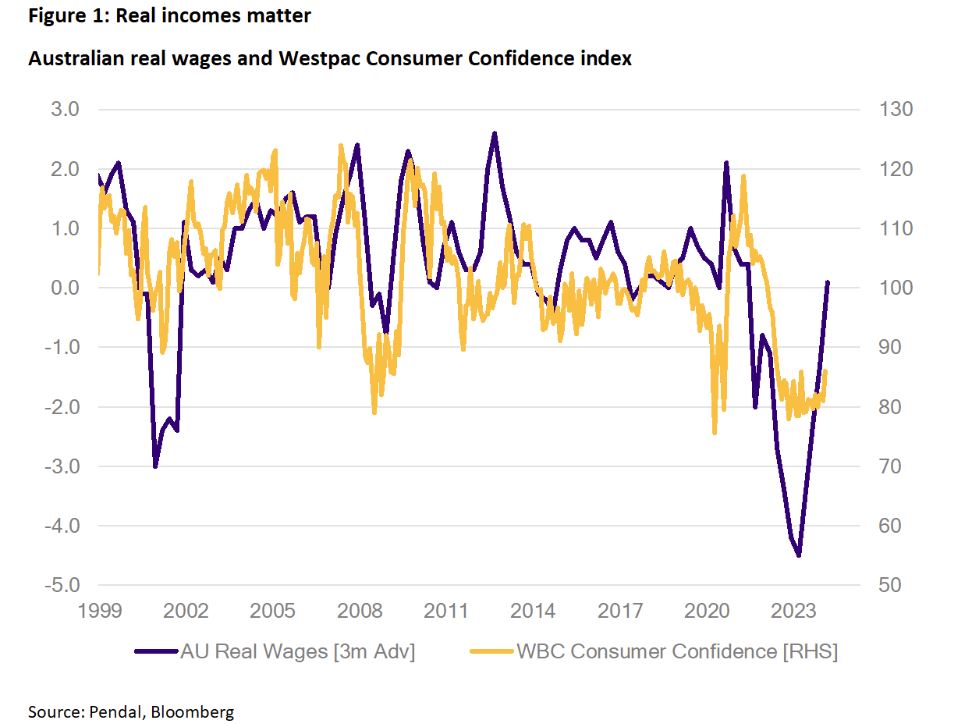
Disinflation is no longer enough
Ironically, falling inflation has been my main reason for liking bonds over the past six months.
Big moves lower in bond yields in the fourth quarter of 2023 seemed like vindication for those views.
But as Pendal’s income and fixed interest team watched the data roll in over December and January, we realised disinflation alone would not be enough to justify a large gap between the market’s pricing and the Fed’s dots.
By the end of 2023, interest rate markets had priced in more than seven rate cuts from the Fed in 2024. Though the median of the Fed’s projections saw only three cuts.
Implicit in my previous view was an assumption that falling inflation would be accompanied by a slowing economy.
As labour markets loosened, consumption would also slow to reflect greater uncertainty on jobs.
If such a macro picture was to play out in the data (and it still might), the Fed and other central banks would be able to lower rates more concertedly.
They wouldn’t need to worry about a rebound in inflation because the gravitational forces of slowing demand would be there to help.
As Figure 2 shows, the disinflation thesis is still intact.
There has been a long-held relationship between the quits rate and wages.
The reasoning is fairly intuitive: we feel less bold about quitting when the prospects of other jobs decline. Empirically, the quits rate seems to lead wage growth by around three quarters.
The data for US consumption tells a different story, which throws a spanner in the works for bond enthusiasts.
Personal consumption expenditure (or PCE) turned a corner in 2023 and remains robust.
Consumer sentiment is rebounding more sharply because real incomes are rising.
Since consumption counts for about 70% of US GDP, it’s hard to build a case that the economy is faltering just yet.
What if there is no landing?
Consumption is now so resilient it’s got the market questioning whether there will be any landing, let alone a hard landing.
In the US, it’s not just consumption.
Manufacturing seems to be stabilising, housing has turned a corner, and the fiscal drag is barely noticeable. Could the next move from the Fed be a hike?
I’m not yet ready to get quite so carried away, but I concede that it’s simply too early to start positioning uber-defensively in portfolios.
Regardless of whether I agree with the no-landing narrative, good portfolio management requires me to entertain that scenario and consider the ramifications for investment decisions.
A no-landing scenario would imply we’ve already moved past any mid-cycle slowdown.
It would support equity analyst earnings growth estimates of around 7.5% this year for the S&P 500 index.
It would give comfort to the idea that high-yield credit spreads can stay lower than what should be implied by recent rising default rates because the worst is already over.
It would also challenge the market and the Fed’s current thinking on rate cuts for this year.
In fact, some argue that if the US economy is still managing to grow above trend with a 5.5% Fed Funds rate, then monetary policy isn’t all that restrictive.
Taken to its conclusion, this train of thought poses risks to bonds.
Since bond and equity returns have been positively correlated since late-2022 – excluding the Silicon Valley Bank blip last year – the idea of no-landing also poses a threat to risky assets.
Volatility is an opportunity
As I entertain the possibility of a no-landing scenario, at least for 2024, I am drawn to a few investment implications.
The first is that I need to be truly active on duration this year.
Set-and-forget on bonds won’t work. Our income strategies carried over five years of duration at the end of 2023, which is more than the AusBond Composite Index (Australia’s most popular fixed income benchmark).
Roughly speaking, that translates to a 5% performance move for the portfolio for every 1% move in yields.
Today, these portfolios carry less than one-tenth of that exposure (so nearly no duration at all).
Not only did this help our funds benefit from the strong moves lower in global bond yields at the end of 2023, but also helped us to avoid the decent back-up in yields since the start of 2024.
The second is that I should expect flashbacks to 2022, where almost everything sold off together.
The main driver will come from bonds and knock-on to other asset classes.
Since our income funds can only be long or square in risky assets, maintaining a liquid portfolio so that we can de-risk out of the riskiest pieces quickly will count for a lot in that environment.
The third is that it’s too soon to get uber-defensive.
Investment grade credit is still a good place to stay in risk while avoiding over-extension.
Bringing this allocation down too much and too soon may mean leaving good quality returns on the table.
On top of that, I need to remain open to buying opportunities in riskier assets such as equities.
After all, the ASX 200 was largely directionless and volatile until the back end of 2023, yet our Monthly Income Plus portfolio was able to seize on the opportunities afforded by the volatility.
Hard landing is not off the table
While I am not ready to buy-in to the no-landing camp, I acknowledge data now supports that narrative.
Having a plan for how to navigate a no-landing market environment is key. Having the flexibility to enact that plan is vital. Portfolio liquidity will be very important this year.
It is worth stressing that a hard landing isn’t off the table.
Just as my subjective odds for a no-landing scenario in 2024 has increased, the odds I assign to a hard landing has diminished.
It is probably just as likely to happen in the first half of 2025 as in the second half of 2024.
How we get there will be one of two ways.
The first would be something that looks like a soft landing, but carries on softening.
Historical experiences of recessions tells us that it happens gradually, then suddenly (to paraphrase Hemingway).
The explanation for this is not unanimously agreed upon, but it probably has something to do with how hard it is to find a neutral policy point when the economy is at full capacity or full employment.
When the economy is at full employment every extra bit of demand pushes prices higher, causing inflation to soar. Any weakening in demand creates extra capacity and the potential for layoffs as companies cut costs.
The trickiest bit to all of this is knowing that monetary policy hits the economy with a lag, but not knowing how long that lag really is.
The safest bet for central bankers with price stability in their mandates is to err on the side of caution, over-tighten to get inflation under control, and hope they can ease policy in time to avoid a really hard landing.
The track record on that last bit hasn’t been great, though.
This cycle poses extra challenges in figuring out the lags.
Did the post-pandemic fiscal stimulus lengthen the lags? Has a largely fixed-rate US mortgage market dampened the pass-through effect of higher interest rates?
Has immigration weakened the link between interest rates and our housing market?
I wish I had all the answers, but I do know this: not all households and corporates managed to fix the rate on their debt at super-low rates.
Corporate defaults have been rising in spite of strong economic growth which means there is buckling at the edges.
Rising delinquencies on consumer loans and credit cards are signs that policy has become restrictive.
At some point, the edges creep into the middle. The lagged effects finally show up, tail risks become the central risk, and the gradual recession becomes a sudden one.
The second way to a hard landing is via no landing. This would push the timing more towards next year.
A no-landing scenario raises the chances that inflation will resurge.
I’m not a massive subscriber to this view as I think there is enough in the inflation and wage data to support a continued disinflation trend.
But I acknowledge that markets will not take kindly to any disappointment on inflation.
A more likely version of this path to hard landing is that during a no-landing phase, central banks feel reluctant to cut rates.
As the lagged effects of restrictive policy catch up with the real economy, the economy eventually falls into a hard landing.
This may also be why the US yield curve has stayed inverted.
Active decisions in times of uncertainty
Let’s bring this back to positioning implications.
The summary of my view change from a few months ago is that I am still not seeing a step down in consumer appetite.
That means disinflation alone is insufficient for driving a strong rally in bonds.
In addition, near-term risks may be skewed to further bond volatility as the market tries on the no-landing narrative.
For our income portfolios, our long bias on duration has eased, and I’m happy to tactically take duration exposures all the way down to minimal levels.
I still like bonds and higher yields offer great asymmetry.
But I really like bonds because I think the hiking cycle (at least in the US) is over.
In an active portfolio, the way to express this is to buy-on-dips and be prepared to take the gains when you have them.
At least for the next couple of months.
I also won’t say no to buying dips in risky assets along the way.
Equities (and credit) do well as long as growth holds up. The prolonged “everything sell-off” in 2022 had as much to do with a deteriorating growth outlook as it did soaring inflation.
It’s hard for anything to do well in the face of stagflation.
In 2024, as long as the growth backdrop remains healthy, everything sell-offs are likely to be good buy-the-dip opportunities.
The core returns driver in our income strategies continues to be high-quality, investment-grade credit.
The pace of corporate bond issuance in Australia has started this year with a bang, all met with very strong demand.
While selective, our portfolios have not shied away from participating in those opportunities.
But I’m keeping an eye on default rates.
As Figure 9 shows, tightening credit conditions tend to lead to higher default rates with a decent lag.
Even though lending standards have begun to loosen, default rates are still rising.
So far, global credit spreads have shrugged off higher default rates, which would be correct if the soft landing has already happened.
However, if this old relationship holds, having a higher quality and liquidity bias in our credit portfolios will give us the resilience and flexibility to navigate an uglier market environment.
About Amy Xie Patrick and Pendal’s Income and Fixed Interest team
Amy is Pendal’s Head of Income Strategies. She has extensive expertise and experience in emerging markets, global high yield and investment grade credit and holds an honours degree in economics from Cambridge University.
Pendal’s Income and Fixed Interest boutique is one of the most experienced and well-regarded fixed income teams in Australia. The team oversees some $20 billion invested across income, composite, pure alpha, global and Australian government strategies.
Find out more about Pendal’s fixed interest strategies here
About Pendal Group
Pendal is a global investment management business focused on delivering superior investment returns for our clients through active management.
The Pendal Geared Imputation Fund (Fund) will terminate on Tuesday, 26 March 2024.
Why is the Fund terminating?
The Fund’s small size means that it has high running costs and cannot be managed in a cost-efficient way.
The Fund has also been in outflow for a number of years, and we consider that there is little prospect of significant growth in funds under management in the foreseeable future.
As the Fund continues to get smaller, continuing to run the Fund would result in higher management costs for investors, which would reduce investment returns.
How this affects you?
We will terminate the Fund on Tuesday, 26 March 2024.
Any applications or transfers received after 11.00am (Sydney time) on Tuesday. 5 March 2024 will not be accepted.
We will continue to accept withdrawal requests up to 2:00pm (Sydney time), on Monday, 25 March 2024.
What happens next?
As soon as practicable after the Fund is terminated on Tuesday, 26 March 2024, we will begin winding up the Fund. The assets remaining in the Fund will be realised and the proceeds paid to all investors in proportion to their unit holding.
What does this mean for you?
The cash proceeds from this termination will be paid directly to your nominated bank account on file on or around Wednesday, 3 April 2024.
We also expect that the termination of the Fund will result in a final distribution of the income of the Fund which will be paid directly to your nominated bank account before the payment of the cash proceeds from the termination.
Details of any distribution paid to you will be included in your final Distribution Statement. You will also receive an AMIT Member Annual (AMMA) statement which will set out the details of taxable income that has been attributed to you following the end of the 2023/2024 financial year.
Questions?
If you have any questions, please contact our Investor Relations Team during business hours Monday to Friday on 1300 346 821.
What is changing?
Effective 5 March 2024, the weighted average maturity (WAM) of the Fund will not exceed 90 days and all securities held by the Fund will mature within 190 days. The Fund’s WAM has been reduced from 100 days and the maximum maturity of all securities held by the Fund has been shortened from 12 months.
The Fund will also no longer have the ability to use derivatives.
Why are we making the changes?
The changes are being made to better reflect the way in which the Fund is managed.
What will stay the same?
There are no other changes to the Fund.
The Fund will continue to target a return (before fees and expenses) that exceeds the RBA Cash Rate by at least 0.45% p.a..
Additionally, there is no change to the Fund’s management fee.
What do you need to do?
No action is required. You will be able to continue to invest and withdraw from the Fund.
Updated Information Memorandum (IM)
An updated IM issued on 5 March 2024 is available by calling us on 1300 346 821.
Here are the main factors driving the ASX this week according to portfolio manager JIM TAYLOR. Reported by portfolio specialist Chris Adams
- Find out about Pendal Focus Australian Share Fund
- Register for Crispin Murray’s bi-annual Beyond the Numbers webinar
LAST week saw the release of highly anticipated January US Personal Consumption Expenditures (PCE) data.
While it showed an increase on previous months, it was in-line with consensus, and there has already been a significant change in expectations around rate cuts in 2024.
So, the market’s reaction was fairly muted – with the S&P 500 ending the week up 0.99%.
The question remains whether the uptick is a blip in the road to further disinflation – as the Fed suggests – or if it is the start of a more significant uptrend.
Locally, the market took Australia’s Consumer Price Inflation (CPI) data for January in its stride, with the S&P/ASX 300 returning 1.68% for the week.
Bonds rallied across the curve, with US 10-year Treasury yields falling 7 basis points (bps).
Commodities were mixed, with Brent crude oil up 2.5% and iron ore down 1.6%.
Bitcoin fired up and is back to its highest level since 21 March.
The Nasdaq and S&P 500 both hit records and were up for the seventh week in the past eight – with the S&P 500 now up in sixteen of the past eighteen weeks, its best run since 1971.
Fedspeak
Last week saw several members of the US Federal Reserve (the Fed) making the case for rate cuts in 2024, while also exercising some caution. In summary:
- Atlanta Fed President and FOMC voting member Raphael Bostic noted that he expects the first cut in the summer.
- Boston Fed President and non-voting member Susan Collins suggested that the path of easing may not be as rapid as in previous cycles.
- New York Fed President (and FOMC Vice-Chair) John Williams observed that there is still “a ways to go” until inflation is back to target.
- Cleveland Fed President and voting member Loretta Mester said that she thinks three cuts for 2024 currently sounds about right.
This week will see Chair Jerome Powell testify before Congress.
The recent convergence between market expectations around rate cuts and the Fed’s own dot-plots should be helpful.
US inflation
January’s PCE index rose 0.34% month-on-month, up from 0.12% in December.
This was the fastest monthly rise for a year but was largely in-line with consensus expectations.
It was up 2.40% year-on-year, down from 2.62% in December.
The Core measure rose 0.42% month-on-month and 2.85% year-on-year.
The Goods component (about 23% of the PCE basket) continues to do much of the heavy lifting, falling 0.05% month-on-month in January.
Core Services (about 65% of the basket) was up 0.58% month-on-month in January after increasing 0.29% in December.
This was despite Housing – which is 15% of the basket – rising at 0.50%, which was lower than the aggregate Core Services inflation.
These results have driven the three and six-month annualised figures back above the Fed’s 2% inflation target.
Personal income rose 1.0% which was well ahead of expectations.
However, once the annual increase in social security payments and the effect of dividends were stripped out, core wages and salary growth rose 0.4% which was in-line with expectations.
US growth
Both initial and continuing jobless claims came in a little above consensus expectations, while January new home sales grew 1.5% which was slightly weaker than expected.
February’s ISM Manufacturing Survey came in at 47.8 – down from 49.1 and well below the 49.5 expected.
The Consumer Confidence Index for February was also weak at 106.7 versus the 114.8 expected and down from 110.9 in January – the first drop in three months.

Find out about
Pendal Horizon Sustainable Australian Share Fund
Australian economy
The CPI fell 0.33% month-on-month in January, following the 0.66% rise in December.
The annual rate rose 2bps to 3.40%, which was a touch under consensus expectations of 3.6%.
The Core measure – which excludes volatile items and travel – was flat month-on-month and the annual rate fell 9bps to 4.13%, which was also lower than expectations.
Food (ex-meat), furnishings, clothing and travel prices are all declining, while rent, home maintenance and utilities are all going up.
The latest round of fortnightly Enterprise Bargaining Agreement (EBA) data showed that wages growth had eased from 4.1% in December to 3.7% in January – though January’s data covered just 9,000 workers versus 199,000 in December.
While the more modest pace suggests we may have seen the peak in wages growth, it also suggests that wages growth is likely to remain relatively elevated.
Interestingly, union wage agreements are continuing to run about 100-150bps higher than non-union agreements.
Retail sales grew 1.1% in January versus the 1.5% expected, suggesting that retail sales are near stalling at current levels.
It is worth noting that the Reserve Bank of New Zealand (RBNZ) kept rates unchanged at 5.5% despite some speculation it would hike.
Rates in New Zealand are unchanged since May last year and the RBNZ remains of the view that sustained high rates are constraining economic activity and prices.
US earnings scorecard
About 97% of the S&P 500 has reported Q4 2023 earnings.
Of this, 73% of companies reported a positive EPS surprise (which is below the five and ten-year averages of 77% and 74%, respectively) and 64% of companies reported a positive revenue surprise.
In aggregate, companies are reporting earnings 4.1% above estimates – again lower than the five-year average of 8.5% and the ten-year average of 6.7%.
The year-over-year earnings growth rate for the S&P 500 is 4.0%, the second-straight quarter of earnings growth.
Looking forward, consensus is expecting 3.6% earnings growth for Q1 2024 and 9.2% for Q2 for overall calendar-year 2024 earnings growth of 11.0%.
The 12-month forward price-to-earnings ratio is 20.4x, which is above the five and ten-year averages of 19.0x and 17.7x.
Australian reporting season wrap
Reporting season began well, with FY24 earnings projections largely unchanged in the first couple of weeks.
Then it faded into the close, with financial year earnings revised down 1.5% over the month – the weakest outcome since February 2009.
Consumer Discretionary, Financials and REITS saw positive revisions, while the sharpest downgrades came in Communication Services, Energy, Consumer Staples and Materials.
Dividend projections were also scaled back.
There are three factors at play:
- Softening margins: seven out of ten GICS sectors (excluding Financials) saw margin compression, with Consumer Discretionary providing one pocket of resilience.
- Interest cost projections are still rising, with consensus estimates higher for every sector bar one.
- High capex projections.
Despite this, the majority of stocks in the index made gains in the wake of their results – with the market price-to-earnings ratio expanding around 0.7x as a result.
Valuation change was the dominant element of price moves during reporting season.
Single-day stock price volatility in reporting season has been elevated since Covid and remains so, though this reporting season was a touch less volatile than previous episodes.
Meanwhile, 35% of companies beat expectations, which was in-line with the historical average, while 46% missed, which was higher than the 34% historical average.
About Jim Taylor and Pendal Focus Australian Share Fund
Drawing on more than 25 years of experience investing in top-performing Australian companies and a background in accounting, Jim manages our Long/Short Fund and co-manages our Imputation Fund. He is a Chartered Accountant with membership of the Australian Institute of Chartered Accountants.
Pendal Focus Australian Share Fund is managed by Crispin Murray. The fund has beaten its benchmark in 14 years of its 18-year history (after fees), across a range of market conditions. Find out more about Pendal Focus Australian Share Fund here.
Pendal is an independent, global investment management business focused on delivering superior investment returns for our clients through active management.
January data suggests inflation continues to moderate. But we shouldn’t read too much into this better-than-expected outcome, writes Pendal’s head of government bond strategies TIM HEXT
- Monthly data supports the theme of moderating inflation
- The months ahead will see a more balanced CPI outcome.
- Why bonds, why now? Pendal’s income and fixed interest experts explain
- Browse Pendal’s fixed interest funds
THE January inflation numbers showed a continuation of the theme of moderating inflation.
Prices were 3.4% higher than January 2023.
More impressively, prices were down 0.3% in January from December – though this number is not seasonally adjusted and January is usually a weaker month.
This continues the downward path to inflation, in place since the 8.4% high in December 2022.
Source: ABS, 2024
Monthly CPI price data sets are not comprehensive, but quarterly are.
Only around 60% of the basket is tracked every month, while 30% is collected once a quarter (with different items in different months) and 10% is annual (with education in February, health insurance in April, and council rates in September).
So effectively, most monthly CPI prints cover 70% of the basket. The others are kept flat.
The list of prices going down in January is quite long; fuel, clothing, furnishings, and recreation all helped reduce inflation.
However, utilities went up (but less than expected), while food prices rose a bit more than expected.

Overall, we shouldn’t read too much into this better-than-expected outcome and the market reaction has also been quite muted.
It does make us more confident on our 0.8% forecast for the March quarter CPI due late April – and if anything, we might lower it to 0.7%.
This would see annual inflation (as measured quarterly, not monthly) also fall to 3.4% – near the RBA forecast of 3.3% of CPI by June.
However, we will have to wait for the September quarter 2023 number of 1.2% to drop out in October for CPI to have a chance of hitting 3%.
The months ahead will see a more balanced CPI outcome.
For items only measured once a quarter, January is goods-heavy, while February and March are more services-heavy – and services are where the higher pressures are. This will be especially so when education hits the February numbers.
If anyone is interested in a breakdown of the path back to low inflation this year, please read my article in our recent Australian Quarterly Update.

Find out about
Pendal’s Income and Fixed Interest funds
Oil remains the main x-factor to these forecasts and prices have edged steadily higher in recent weeks, though still in range for now.
The RBA will remain confident that its inflation forecasts are being met.
This does not mean rate cuts in the months ahead, but if the Fed were to start cutting in May, it still opens the door for lower rates here in the second half of 2024.
We remain biased to being overweight duration but will continue to adjust positioning based on market levels in a range-trading market.
About Tim Hext and Pendal’s Income & Fixed Interest boutique
Tim Hext is a Pendal portfolio manager and head of government bond strategies in our Income and Fixed Interest team.
Tim has extensive experience in banking, financial markets and funding including senior positions with NSW Treasury Corporation (TCorp), Westpac Treasury, Commonwealth Bank of Australia, Deutsche Bank, Bain & Co and Swiss Bank Corporation.
Pendal’s Income and Fixed Interest boutique is one of the most experienced and well-regarded fixed income teams in Australia.
Find out more about Pendal’s fixed interest strategies here
About Pendal
Pendal is a global investment management business focused on delivering superior investment returns for our clients through active management.
In 2023, Pendal became part of Perpetual Limited (ASX:PPT), bringing together two of Australia’s most respected active asset management brands to create a global leader in multi-boutique asset management with autonomous, world-class investment capabilities and a growing leadership position in ESG.
Here are the main factors driving the ASX this week, according to Pendal’s head of equities CRISPIN MURRAY. Reported by investment specialist Chris Adams
- Find out about Pendal Focus Australian Share fund
- Register for Crispin Murray’s bi-annual Beyond the Numbers webinar on March 8
LAST week was quiet on the macro front, with little data to add to the debate on disinflation and growth.
Fed speakers remain patient, as an economy holding up well allows them to wait and see if improving inflation trends are confirmed.
The US equity market was singularly focused on the Nvidia result, which once again beat consensus expectations, taking the stock – and the market – to new highs.
The S&P 500 ended up 1.68% for the week.
US earnings have been good, index momentum is strong, breadth is reasonable, the macro backdrop is supportive, and seasonality is positive – with March/April historically the best two months in 1H.
So, while consolidation is possible, the market remains in an uptrend.
The Australian market was largely flat, in a week dominated by results (S&P/ASX 300 +0.12%).
Earnings season is telling us the economy is okay; there is the odd pocket of softness, but generally, trends are continuing as before.
Industrial and tech companies are doing better, while large consumer-facing companies are wary of delivering a message which is too positive for fear of a media backlash.
Economy and inflation
United States
There was little relevant data last week.
We are seeing some survey data – such as the Evercore ISI Company Survey Diffusion index – indicate that the industrial sector is beginning to improve in the US.
This had been dragged lower by substantial destocking in 2023.
Even a gentle recovery here would help underpin economic growth.
A number of Fed members made comments during the week, generally emphasising the importance of not overreacting to January’s CPI data.
Governor Chris Waller was the most cautious, saying that the chance of January’s CPI being noise versus a signal was a fifty-fifty chance. He does tend to be at the more hawkish end of the debate.
Vice-chair Philip Jefferson and New York Fed chief John Williams took a more benign view.
Williams noted that disinflation tends to be bumpy but is moving in the right direction, and that while core inflation is still above the 2% target, it is below 3%. He also noted there was no need to shift the view on neutral rate levels.
These comments continue to suggest a likely first cut in May or June.
Economic resilience gives the Fed capacity to be patient; it would be a tougher call if there was a weaker economy, but inflation hasn’t fallen sufficiently.
Europe
Europe also saw some marginally positive industrial survey data, as the Euro Area S&P Global and Global Composite PMIs – a measure of confidence – ticked up.
We also first signs of wage growth data easing in Europe.
China
Sentiment remains poor and authorities continue to try to support the stock market.
The National People’s Congress annual meeting in March looms large.
The market will be looking to this event to provide signals on growth targets, fiscal deficit, local government bond quota and potential central government bond issuance.
Markets
Nvidia is the bellwether for the AI theme which, in turn, is the leading theme in the market.
Its Q4 result was strong and better than expected, leading to a US$250 billion rise in market cap on the day and a current market cap of more than US$2 trillion.
The market liked several messages from management, including:
- Revenue was diversifying, implying a more sustainable earnings stream.
- The company absorbed a large hit from China, where regulation shrank its market from about 25% to mid-single digit of revenue in the quarter.
- New production innovation from late 2024, which has five to ten times the computational power and should underpin the outlook for 2025.
- Enterprise and sovereign demand are gaining share.
The spread into enterprise is particularly interesting as that goes to the use case and the potential for generative AI to accelerate productivity and earnings in other sectors.

Find out about
Pendal Horizon Sustainable Australian Share Fund
Overall, the US market appears to remain well underpinned as it breaks to new highs.
The percentage of stocks above their 200-day moving average has remained in the 70-80% range in 2024, which compares to a trough of near 20% in October last year.
Sentiment is very bullish, but this is not a reason in and of itself for the market to drop.
For example, the market stayed near current levels of bullishness – as measured by the Consensus Inc % Bullish measure – for extended periods across 2014-15 and late 2016-18.
Earnings season
Earnings season in Australia remains mixed, with no clear macro themes emerging.
REIT and retailer results suggest that the consumer continues to hold up relatively well.
But there are pockets of softness – for instance, the supermarket sector as price inflation falls, but no pick-up in volumes in response.
Advertising remains very soft, but industrial companies are generally seeing activity remain at the same cadence.
Cost control has been a point of differentiation at the company level, but it tends to be disciplined control rather than large restructuring announcements.
One recurring theme is that large companies, particularly with a consumer focus, are mindful about the media and government reaction to their results.
There is a less positive spin and more focus on evidence of reinvesting to help customers.
In some cases, it appears as though companies are prepared to sacrifice valuation ratings to avoid facing backlash.
Industrial and tech companies are more immune to this issue and are, therefore, faring better.
About Crispin Murray and the Pendal Focus Australian Share Fund
Crispin Murray is Pendal’s Head of Equities. He has more than 27 years of investment experience and leads one of the largest equities teams in Australia. Crispin’s Pendal Focus Australian Share Fund has beaten the benchmark in 12 years of its 16-year history (after fees), across a range of market conditions.
Pendal is a global investment management business focused on delivering superior investment returns for our clients through active management.
Why a hard landing looks unlikely | Latest outlook for inflation | Three mid-cap themes to consider | Opportunities in industrials
Despite some negative surprises among ASX industrials this earnings season, there are still opportunities for stock pickers. Pendal analyst ANTHONY MORAN explains his approach
- Industrials hit by changes in customer behaviour.
- Opportunities in sold off stocks, but watch margin pressures
- Find out about Pendal Focus Australian Share fund
THERE have been plenty of negative surprises among industrial stocks this ASX earnings season, showing how companies across the economy are changing their behaviour, says Pendal equities analyst Anthony Moran.
It’s an environment that provides opportunity for stock pickers – if you know what to look for.
“Several industrials companies have demonstrated weakness for the December six months and it’s been a surprise,” Moran says.
“There is more weakness than expected and that’s manifesting in corporate results.”
Moran nominates packaging group Amcor where volumes were down 10 per cent for the December quarter, year-on-year.
“That’s quite astounding for a company that sells packaging for centre-of-the-aisle groceries.
“It highlights that there is weak demand in certain sectors, and the de-stocking impact has exceeded expectations,” Anthony says. Pendal holds Amcor.
More broadly, it shows that companies across the economy are trying to manage higher interest costs by reducing working capital and maximising their cash balances, he says.

“Amcor saw it. Fletcher Building experienced it through the New Zealand construction cycle.
“Treasury Wine Estates saw it in their US wine business and in their Asian premium business. At Treasury there is more destocking then expected along with a weaker consumer.” Pendal holds Treasury Wines.
Where to look for opportunities
The macro shifts hitting individual companies throw up opportunities for investors, Moran argues.
“There are companies that have cyclical weakness, and their valuations can be attractive.
“You want to look for a company that has the ability to grow above its end market and has the potential to accelerate its share, even in a declining market.
James Hardie (held by Pendal) is an example, he says.
“It’s shown strong growth in the last 12 months even as the repair-and-remodel cycle has been down double digits in the US.
“You want companies that are able to do that,” he says.
Another example is Orora (also held by Pendal) which is a major packaging distributor which has spent time implementing a new operating model, that is now showing sustained market gains, Anthony says.

Pendal Focus Australian Share Fund
Now rated at the highest level by Lonsec, Morningstar and Zenith
Delivering good performance from a core business, even if the market is not growing, is attractive to investors, Anthony says.
“Aristocrat Leisure is doing that at the moment. The US casino market is stable, but Aristocrat is delivering good performance.” Pendal holds Aristocrat.
Look for companies emerging from down cycles
He says investors should consider looking for industries that are emerging from down cycles, particularly if they are worried about the economic outlook.
Another theme coming through earnings season, particularly across industrials, is margin disappointment, Anthony says.
“In Fletcher Building’s case, the sensitivity of the margins surprised but that’s what you get in big volume downturns.
“But for someone like Hardie, it did disappoint on its margin outlook, and that’s because some of the cost relief they got during Covid is starting to normalise up.
Transurban is another example where they recorded another year of cost growth above inflation and that’s crimping their margins.
“The headline is that costs are still an issue for a number of companies and for most industries pricing power is coming off. It means investors need to watch margins,” Anthony says.
“The next 12 to 24 months is going to be the great normalisation of the post-Covid super-cycle in margins, at least for the industrials sector.”
About Anthony Moran
Anthony Moran is an analyst with more than 15 years of experience covering a range of Australian and international sectors. His sector coverage has included Australian Industrials and Energy, Building Materials, Capital Goods, Engineering & Construction, Transport, Telcos, REITs, Utilities and Infrastructure.
He has previously worked as an equity analyst for AllianceBernstein and Macquarie Group, spending a further two years as a management consultant at Port Jackson Partners and two years as an institutional research sales executive with Deutsche Bank.
Anthony is a CFA Charterholder and holds bachelor’s degrees in Commerce and Law from the University of Sydney.

